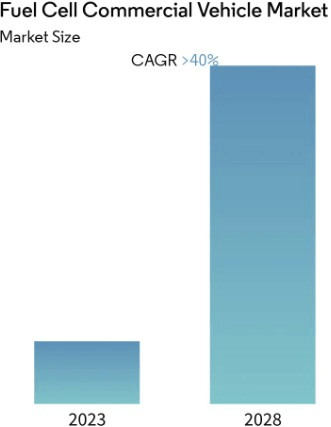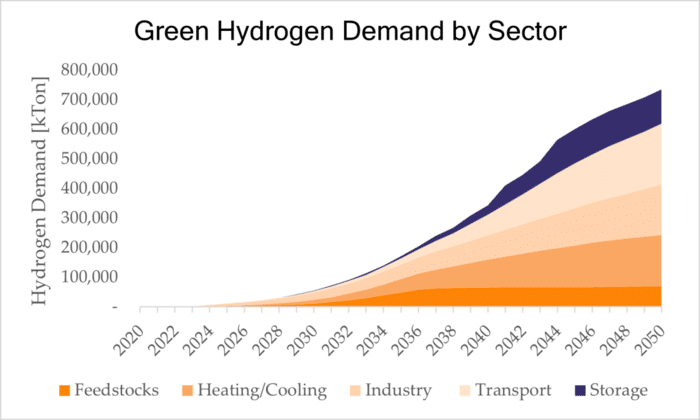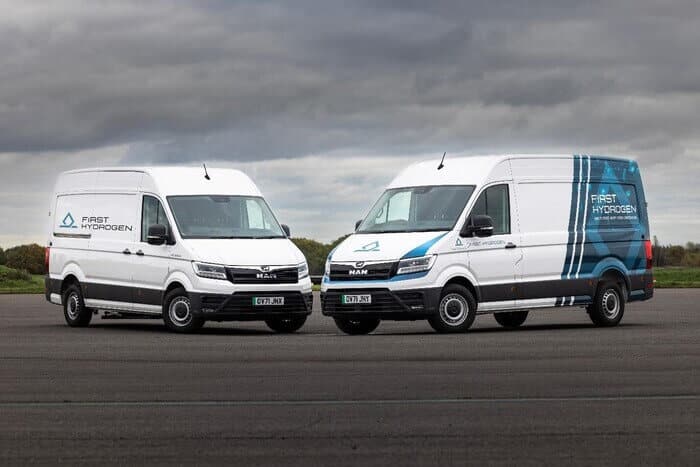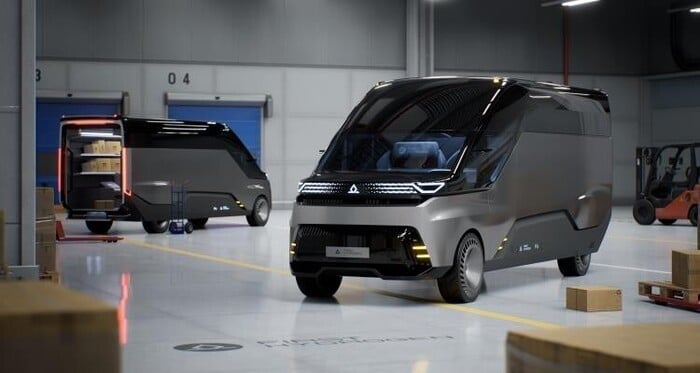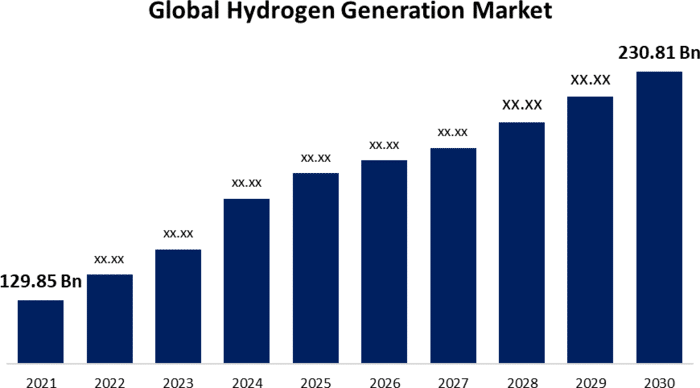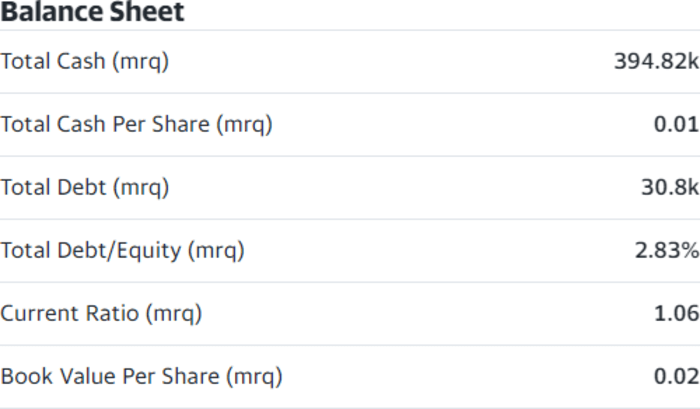In this Report
This Market is Growing at 40% Every Year…
Is This the Future of Highways and A.I.? Tap Into Hydrogen’s Unlimited Power Potential
First Hydrogen Corp.
FHYD: TSXV | FHYDF: OTC
5 Key Highlights of First Hydrogen (FHYD):
- Growing Market: Hydrogen is at the center of a new market expanding 40% annually and First Hydrogen has first-mover advantage.
- Better than EVs: First Hydrogen’s vehicles have longer range than electric cars, carry more weight, and produce less emissions.
- Almost Launched: 16 of the largest fleet operators in the UK are trialing their vehicles over the next 18 months, with a full launch expected in 2026.
- 3 Income Streams: First Hydrogen doesn’t just produce Zero Emission Vehicles (ZEV), it also has two other businesses and one is a market set to reach $230 billion (more below…)
- Small Cap: First Hydrogen shares are worth just $189 million currently, roughly 4,014 times smaller than Tesla.i
When AI melded with human intellect in 2023, the world was utterly unprepared for the astonishing evolution that followed.
From crafting groundbreaking medicationsii to outpacing medical experts in disease detection,iii AI’s capabilities are staggering.
Consider this: An AI developed by a lone coder in merely 20 hours can beat a Chess Grandmaster. iv
And that’s not all – we even have AI composing symphonies across 10 instruments. v
This revolution is poised to unleash a surge of human potential, with projections indicating a staggering $15.7 trillion boost in global wealth by decade’s end—equivalent to the combined outputs of China and India. vi
Yet, beneath all this brilliance lies a crucial component: hydrogen.
The critical element making future AI breakthroughs possible.
Hydrogen is a Powerhouse Driving Future Technology
When hydrogen is burned in a fuel cell, it reacts with air to produce electricity, and the only emission it creates is water.
This offers significant advantages when paired with AI, because the need for data centers has rapidly increased ever since it went mainstream.
Global spending on AI is expected to grow 26.5% annually by 2026,vii and since AI applications burn more energy than conventional software, demand for data centers can’t keep up with supply.viii
- Equinix, which operates 245 data centers worldwide, cited power availability as one reason for a supply chain crunch. ix
Hydrogen can power more data centers in a much cleaner way, and without relying on foreign natural resources.
But data centers are just one part of the Hydrogen-AI boom…
Tech firms like Amazon, Google, and IBM are investing heavily to develop Quantum Computers.x
Regular computers solve problems step by step, while Quantum Computers process more information simultaneously, and look at many steps at once.
Stephen Hawking said Quantum Computing “Quantum computers will change everything, even human biology.”xi
In order to unlock their full potential, semiconductor particles are required which rely on hydrogen to control the quantum state of electrons. xii
In other words, these electrons have to be in a particular form for Quantum Computers to work the way they’re supposed to. And hydrogen is a critical element which helps them get into form.
Since it can be compressed into tanks at high pressures, liquefied at extremely low temperatures, or chemically stored in solid materials…
- It will bring electricity and other technology to off-grid locations that otherwise never could have xiii
- It will power homes and offices even in the most rural locations, while reducing the need for outside
Yet, there is one specific hydrogen application on the horizon, and it’s poised to unleash unparalleled shareholder value as it storms the mainstream.
The Market Growing an Astounding 40% Annually… xiv
Is the Hydrogen Commercial Vehicle Industry.
Hydrogen-powered vehicles are about to take over a share of the roads… Because compared to electric vehicles…
- They’re cleaner,
- Use power more efficiently,
- Charge faster and
- Have longer operating
While most people view electric vehicles as “green,” they still emit carbon dioxide if they’re charging at home, and there’s nothing “green” about that.
Hydrogen fuel cells are completely green. You’ll hear people refer to “green hydrogen,” meaning hydrogen that’s generated by renewable energy or from low-carbon power.
Green Hydrogen can cut annual global emissions by 20% on its own. xv
Electric battery production relies on precious and rare metals like lithium, cobalt, and nickel.
Putting an electric car in every driveway in America would require more lithium than the world produces,xvi but hydrogen fuel cells don’t require any of these materials.
They are similar to gas cars because they refuel in just a few minutes, significantly faster than even the quickest electric vehicle charging times.
For commercial vehicles, where downtime means lost revenue, hydrogen is a game-changer.
Hydrogen fuel cells have a higher energy density, and for the same weight, hydrogen can deliver more energy than a battery.
Beginning in 2025, stricter emission standards in some countries will put further pressure on businesses to convert to greener energy. xvii
Electric batteries can be heavy and don’t provide enough range for big trucks, especially when they’re carrying heavy loads.
That’s where hydrogen steps in.
It can power big vehicles without the issue of heavy batteries. And many argue it’s the future for commercial transport.
Hydrogen’s 2 Biggest Barriers Have Been Lifted
Hydrogen currently accounts for less than 2% of total global energy consumption, mostly for refining and industrial purposes. xviii
The International Energy Agency predicts hydrogen usage to grow sixfold by 2050 and will supply 10% of total energy consumption. xix
Hydrogen’s full potential is finally being tapped into in 2023 for two main reasons.
First, the expense of conducting electrolysis was prohibitively high for years.xxi Electrolysis is a method which generates low-emission hydrogen from renewable or nuclear energy.
But this situation is now changing.
McKinsey & Company says: “The production costs of clean hydrogen are expected to rapidly decline over the next decade.”xxii
The U.S. Department of Energy named hydrogen a “critical material,”xxiii and launched their “Hydrogen Shot” program to reduce the cost of green hydrogen by 80%.xxiv
The lower the cost, the faster hydrogen-powered vehicles will spread throughout the world, and companies in this industry could grow substantially.
The second barrier to Hydrogen was the public’s awareness of its benefits compared to gas and electric cars.
However, this is also beginning to change.
First Hydrogen
(FHYD:TSX | FHYDH:OTC)
Bringing Hydrogen Vehicles to North America, Europe, the UK, and Beyond
In July, the U.S. Department of Energy said:
“Hydrogen demand is expected to grow in… long-distance heavy- and medium-duty trucks.” xxv
As businesses wake up to the benefits of switching their vehicles from gas and electric to hydrogen, First Hydrogen (TSX: FHYD) is a first-mover ready to absorb this rise in demand.
First Hydrogen sells and leases next-generation hydrogen commercial vehicles, the exact type the Department of Energy is predicting a boom for.
- In the UK, spending on zero-emission vans increased 50% in 2021.xxvi
First Hydrogen’s demonstration vehicle became road legal in October 2022 with a range of 500 kilometers or more, while the average electric car has just a 348-kilometer range.xxvii
Then on August 8, 2023 First Hydrogen announced their van cleared 630km of range in a trial with SSE Plc.
And Rivus has 120,000 vehicles in their fleet!
The company’s light and medium-sized commercial vehicles can refuel in minutes, just like a gas-powered car.
An 18-month public trial started this year under real-world conditions to collect data while building up customer interest. xxviii
16 of the largest fleet operators in the UK have already signed up for the trial, from industries such as telecoms, utilities, infrastructure, delivery, grocery, and healthcare.xxix
Once the 18-month trial concludes, First Hydrogen plans to commence public sales of its “First Gen” vehicle in early 2026.
The “Next Gen Large Series” is slated to launch in 2028 and this vehicle will provide a range 1,000 kilometers or more,xxx nearly 3-times higher than the average EV. xxxi
Hydrogen Vehicles are Ramping Up in the USA…
Sales of new hydrogen vehicles just hit a record high in California,xxxii
And most industry executives believe this technology will breakthrough the industrial transportation market. xxxiii
Some of the most cutting-edge automakers are already transitioning to hydrogen…
- Toyota plans to sell more than 200,000 hydrogen vehicles by 2030.xxxiv
- Ford is developing its first hydrogen semi-truck, which will be tested in Europe.xxxv
- BMW has rolled out a test fleet of 100 hydrogen-powered vehicles.xxxvi
Yet, as major automakers jostle for dominance in this arena, First Hydrogen is aligning to capture the rapidly expanding light and medium commercial vehicle market. xxxvii
Building Hydrogen Vehicles is Just One Income Stream for First Hydrogen…
First Hydrogen’s second business consists of providing powertrains for adjacent markets.
The company is in perfect position to provide these services because First Hydrogen has invested over $15 million into researching and developing hydrogen vehicles since 2021 alone.xxxviii
It’s leveraging its expertise in hydrogen powertrains and all the work accomplished to date to help other businesses while acquiring even more tech feedback for developing their own products.
By sharing its hydrogen technology with the markets below, First Hydrogen expects to boost short-term revenue:
- Recreational boat market = +$16 Billion xxxix
- Agriculture = ~$2.5 Billion fuel cell market by 2030
- Back-up power, portable power, EV charging = ~$1.4 Billion fuel cell market by 2030
- Commercial trucks = ~6 million medium-weight vehicles per year globally (units)
- Camper Vans = North American market valued at $56-billion (2022), anticipated to reach $108-billion by 2032
All of these markets are positioned to become early adopters of hydrogen vehicles and First Hydrogen has the technology and services to get them on the road.
Hydrogen as a Service
First Hydrogen will control part of the global hydrogen fuel supply by building its own production operation.
The plan is to build refueling stations just like gas stations which are set to launch in 2026 however, the company’s “Hydrogen as a Service” provides even more benefits.
Hydrogen as a Service is for customers who prefer their hydrogen fuel to be delivered to them directly.
This not only simplifies entry into the hydrogen vehicle market for new customers but also ensures consistent fuel availability for current ones.
The long-term benefits are greater customer loyalty and retention for First Hydrogen, but also revenue diversification into a growing niche.
The global hydrogen generation market is expected to reach $230.81 billion by 2030.
Hydrogen’s French Revolution: Breaking Ground in Quebec
First Hydrogen (FHYD:TSX) purchased two plots of land in the City of Shawinigan, Quebec, which will produce 35 megawatts of green hydrogen using advanced electrolysis technology.
- 35 Megawatts has the potential to power roughly 87,797 vehicles.xl
The company will distribute this hydrogen within the Montreal-Quebec City corridor, but this new Quebec location won’t just produce hydrogen…
It will also assemble 25,000 First Hydrogen vehicles every year, which will then be sold throughout North America.
First Hydrogen is partnering with regional educators to help foster the high-demand skills needed for this booming industry.
Once hydrogen reaches full market penetration, it’s expected to create 675,000 new jobs in the United States alone. xli
Big Oil Pivots to Hydrogen
The most powerful global energy companies are now venturing into the rapidly expanding hydrogen market.
- Exxon Mobil is building a large-scale hydrogen plant in Texas,xlii in addition to exploring green hydrogen production in Norwayxliii
- Shell is building Europe’s largest renewable hydrogen plantxliv and will spend up to $1 billion annually on hydrogen over the coming two years.xlv
- BP has a 150-person team dedicated to hydrogen,xlvi and has made several investments into large hydrogen projects, including in Australia, Europe and Britain.
- The Saudi Arabian Government is launching an $8.4 billion green hydrogen plant.xlvii
- Saudi Aramco recently invested in a tech startup turning ammonia into hydrogen.xlviii
Big Oil’s investments are speeding up hydrogen’s path to the mainstream market.
First Hydrogen’s Unique Position
First Hydrogen has incredible potential and runway to capitalize on the hydrogen market.
- A company’s Quick Ratio is a financial metric that measures its ability to cover its short-term liabilities with its most liquid assets, anything at “1” or over indicates a company can pay its debts, and First Hydrogen passes.
The company is in this position because it has nearly 13 times more cash than it does debt at the time of this writing. xlix
- 7.67% of shares are owned by company insiders, which reinforces management’s dedication to enhancing shareholder value.l
However, just 1% of shares have been bought by institutional investors so far, as many large funds simply cannot buy a stock this small due to their Charter Agreements.li If First Hydrogen’s value rises, large investors will become eligible to buy it.
The Innovators Making It Happen
The company’s CEO is Balraj Mann, who has over 40 years of experience in corporate finance and acquisitions for public and private companies.
Rob Campell is the CEO of First Hydrogen’s Energy Business. He’s spent 40 years working in engineering, including as Chief Commercial Officer at Ballard Power Systems.
First Hydrogen’s CEO of Automotive is Steve Gill, who spent 20 years with Ford Motor Company, including as Director of Powertrain Engineering at Ford of Europe, and 11 years as Chief Engineer with Perkins Engines.
Francois Morin, VP of Corporate and Business Development – Quebec, brings 25+ years of business operations and development after leaving BMO Financial Group where he played a pivotal role in implementing a sustainable finance program for the Quebec business sector.
This team is on a path to bring First Hydrogen’s products to North America, Europe, the UK, and more.
They have a track record of delivering success in automotive engineering, manufacturing, and finance, and their combined skillsets have positioned the company to be a first mover in this fast-growing industry.
“Hydrogen Highways” are Inevitable
The hydrogen vehicle industry is growing 40% every year,lii while the hydrogen generation market is expected to reach $230 billion by the end of the decade. liii
$10 billion worth of hydrogen projects are being announced every month.liv
First Hydrogen’s three main revenue streams, which include producing zero-emission vehicles, providing hydrogen to customers, and powertrain supply, all position the company to grow with this new demand.
Because hydrogen is the cleanest form of energy and offers benefits that gas and electric vehicles do not, it’s poised to become the future of how businesses transport their goods.
First Hydrogen presents a unique opportunity to invest in a company with very little debt, yet huge potential to radically change transportation and provide shareholder value.
DISCLOSURES/DISCLAIMERS
IMPORTANT DISCLAIMER
Carbon Credits, as a publisher, is not a broker, investment advisor, or financial advisor in any jurisdiction. Please do not rely on the information presented by Carbon Credits as personal investment advice. If you need personal investment advice, kindly reach out to a qualified and registered broker, investment advisor, or financial advisor. The communications from Carbon Credits should not form the basis of your investment decisions. Examples we provide regarding share price increases related to specific companies are based on randomly selected time periods and should not be taken as an indicator or predictor of future stock prices for those companies.
First Hydrogen Corp. has reviewed and sponsored this article. The information in this newsletter does not constitute an offer to sell or a solicitation of an offer to buy any securities of a corporation or entity, including U.S. Traded Securities or U.S. Quoted Securities, in the United States or to U.S. Persons. Securities may not be offered or sold in the United States except in compliance with the registration requirements of the Securities Act and applicable U.S. state securities laws or pursuant to an exemption therefrom. Any public offering of securities in the United States may only be made by means of a prospectus containing detailed information about the corporation or entity and its management as well as financial statements. No securities regulatory authority in the United States has either approved or disapproved of the contents of any newsletter.
Carbon Credits nor any employee of Carbon Credits is not registered with the United States Securities and Exchange Commission (the “SEC”): as a “broker-dealer” under the Exchange Act, as an “investment adviser” under the Investment Advisers Act of 1940, or in any other capacity. He is also not registered with any state securities commission or authority as a broker-dealer or investment advisor or in any other capacity.
HIGHLY BIASED: In our role, we aim to highlight specific companies for your further investigation; however, these are not stock recommendations, nor do they constitute an offer or sale of the referenced securities. Carbon Credits has received cash compensation from First Hydrogen Corp as reported in their July 28, 2023 news release and is thus extremely biased. It is crucial that you conduct your own research prior to investing. This includes reading the Audited annual financial statements and management discussion and analysis, as at March 31, 2023, available on SEDAR and SEC filings, press releases, and risk disclosures. The information contained in our profiles is based on data provided by the companies, extracted from SEDAR and SEC filings, company websites, and other publicly available sources.
HIGH RISK: The securities issued by the companies we feature should be seen as high risk; if you choose to invest, despite these warnings, you may lose your entire investment. You must be aware of the risks and be willing to accept them in order to invest in financial instruments, including stocks, options, and futures.
NOT PROFESSIONAL ADVICE: By reading this, you agree to all of the following: You understand this to be an expression of opinions and NOT professional advice. You are solely responsible for the use of any content and hold Carbon Credits, and all partners, members, and affiliates harmless in any event or claim. While Carbon Credits strives to provide accurate and reliable information sourced from believed-to-be trustworthy sources, we cannot guarantee the accuracy or reliability of the information. The information provided reflects conditions as they are at the moment of writing and not at any future date. Carbon Credits is not obligated to update, correct, or revise the information post-publication.
FORWARD-LOOKING STATEMENTS: Certain information presented may contain or be considered forward-looking statements. Such statements involve known and unknown risks, uncertainties and other factors which may cause actual results or events to differ materially from those anticipated in these statements. There can be no assurance that any such statements will prove to be accurate, and readers should not place undue reliance on such information. Carbon Credits does not undertake any obligations to update information presented, or to ensure that such information remains current and accurate.
Footnotes:
i
Tesla Market Cap: 760.34B
First Hydrogen: 189.35M
ii https://www.clinicaltrialsarena.com/comment/first-drug-created-ai-enters-trials/#:~:text=Hong%20Kong%2Dbased%20biotech%20InSilico,causing%20scarring%20within%20the%20lungs.
iii https://towardsdatascience.com/ai-diagnoses-disease-better-than-your-doctor-study-finds-a5cc0ffbf32
iv https://medium.com/swlh/ai-beats-grandmasters-in-chess-cacb0a06bb5b
So, in the end, after around 20 hours of training, I faced off the AI against a 2600 rated bot. (2500 is the minimum rating to be considered a grandmaster). In 76 moves, the AI was able to create a draw against an above-average GM. This project really gave insight into the situational ability of a lot of types of AI. Hopefully, you learned something as well!
v https://openai.com/research/musenet
vi https://www.pwc.com/gx/en/issues/data-and-analytics/publications/artificial-intelligence-study.html#:~:text=Total%20economic%20impact%20of%20AI%20in%20the%20period%20to%202030&t ext=AI%20could%20contribute%20up%20to,come%20from%20consumption%2Dside%20effects.
According to a report by PwC, AI could contribute up to $15.7 trillion to the global economy by 2030.
viihttps://www.wsj.com/articles/rising-data-center-costs-linked-to-ai-demands-fc6adc0e
Global spending on AI is expected to exceed $301 billion by 2026, growing at a compound annual rate of 26.5%, according to market research company International Data Corp.
viii https://www.wsj.com/articles/rising-data-center-costs-linked-to-ai-demands-fc6adc0e
The declines came even as overall inventories grew 19.5% year-over-year to a total of 2,132 megawatts, CBRE said.
ix https://www.wsj.com/articles/rising-data-center-costs-linked-to-ai-demands-fc6adc0e
Jon Lin, executive vice president and general manager of data center services at Equinix, which operates more than 245 data centers worldwide, said building new data center capacity to keep up with rising demand has become more challenging in recent years. He cites supply-chain constraints, construction and permitting complexities and power availability, among other factors.
x https://www.techtarget.com/searchdatacenter/feature/Companies-building-quantum-computers
xi https://www.goodreads.com/author/quotes/1401.Stephen_Hawking?page=9#:~:text=Computational%20power%2 0is%20growing%20and,change%20everything%2C%20even%20human%20biology.
xii https://chemistry-europe.onlinelibrary.wiley.com/doi/10.1002/cssc.202201925#:~:text=Nowadays%2C%20quantum%20dots%20(QDs)%2D,excellent%20optical%20and%20electrical%20properties
xiii https://www.gencellenergy.com/markets-applications/off-grid-power/
xiv https://www.alliedmarketresearch.com/hydrogen-fuel-cell-vehicle-market#:~:text=The%20global%20hydrogen%20fuel%20cell,its%20on%2Dboard%20electric%20motor.
xv https://www.mckinsey.com/~/media/mckinsey/email/rethink/2023/05/2023-05-10d.html
xvi https://www.scientificamerican.com/article/making-the-entire-u-s-car-fleet-electric-could-cause-lithium- shortages/
xvii https://theicct.org/publication/eu-co2-standards-cars-vans-
may23/#:~:text=More%20ambitious%20emissions%20reductions%2C%20but,is%20open%20for%20e%2Dfuels.
xviii https://www.iea.org/reports/global-hydrogen-review-2022/executive-summary
xix https://www.iea.org/reports/global-hydrogen-review-2021/executive-summary
In the IEA’s Net Zero by 2050: A Roadmap for the Global Energy Sector, hydrogen use extends to several parts of the energy sector and grows sixfold from today’s levels to meet 10% of total final energy consumption by 2050. This is all supplied from low-carbon sources.
xx https://cleantechnica.com/2022/09/01/electrolyzer-supply-to-increase-green-hydrogen-availability/
xxi https://pv-magazine-usa.com/2020/03/26/electrolyzer-overview-lowering-the-cost-of-hydrogen-and- distributing-its-productionhydrogen-industry-overview-lowering-the-cost-and-distributing-production/
xxii https://www.mckinsey.com/capabilities/sustainability/our-insights/five-charts-on-hydrogens-role-in-a-net-zero- future
xxiii https://www.energy.gov/sites/default/files/2023-07/doe-critical-material-assessment_07312023.pdf
xxiv https://www.energy.gov/eere/fuelcells/hydrogen-shot#:~:text=The%20first%20Energy%20Earthshot%2C%20launched,%221%201%201%22).
xxv Page xii https://www.energy.gov/sites/default/files/2023-07/doe-critical-material- assessment_07312023.pdf
US Dept of Energy says: “Hydrogen demand is expected to grow in three main areas: (1) decarbonization of long-distance heavy- and medium-duty trucks, air, and marine transport; (2) applications requiring stationary storage; and (3) applications requiring high-temperature heat generation and chemical production, specifically to produce low-carbon ammonia, methanol, and various other chemicals.” xxv
xxvi https://firsthydrogen.com/investors/
xxvii https://blog.evbox.com/far-electric-car-range
xxviii https://firsthydrogen.com/encouraged-by-mini-budget-announcement/
xxix https://firsthydrogen.com/first-hydrogen-vans-receive-road-certification/
xxx https://firsthydrogen.com/wp-content/uploads/2023/05/May-2023-First-Hydrogen-Investor-Deck-2.pdf
xxxi 1,000 / 348 = 2.87X
xxxii https://www.hydrogeninsight.com/transport/sales-of-hydrogen-fuel-cell-cars-reach-record-levels-in-california- but-still-lag-far-behind-battery-electric/2-1-1494091
xxxiii https://firsthydrogen.com/investors/
xxxiv https://www.hydrogeninsight.com/transport/toyota-we-will-sell-more-than-200-000-hydrogen-powered- vehicles-by-2030/2-1-1485373
xxxv https://www.hydrogeninsight.com/transport/ford-to-develop-its-first-hydrogen-semi-truck-targeted-at- europe/2-1-1496008
xxxvi https://www.press.bmwgroup.com/global/article/detail/T0408839EN/bmw-group-brings-hydrogen-cars-to-the- road:-bmw-ix5-hydrogen-pilot-fleet-launches?language=en
xxxvii https://www.gminsights.com/industry-analysis/light-commercial-vehicle-lcv-market#:~:text=Light%20Commercial%20Vehicle%20Industry%20Analysis,CAGR%20from%202023%20to%202032.
xxxviii https://finance.yahoo.com/quote/FHYDF/financials?p=FHYDF
xxxix All figures taken from investor deck:
https://firsthydrogen.com/wp-content/uploads/2023/05/May-2023-First-Hydrogen-Investor-Deck-2.pdf
- xl Convert 35 MW to energy per day: 35 MW * 24 hours = 840 MWh/day.
- Convert this electrical energy equivalent to hydrogen: Given hydrogen’s energy content and considering fuel cell efficiency, the equivalent hydrogen needed = 840MWh/day33.6kWh/kg∗6kWh/kg∗0.6840MWh/day ≈ 35,119 kg of hydrogen per day.
- Calculate how many vehicles this amount of hydrogen could power based on average consumption: Given our consumption rate of 8 kg/100 km, those 35,119 kg could power a car for 35,119kg0.8kg/100km0.8kg/100km35,119kg = 4,389,875 kilometers.
- Translate this distance into the number of vehicles: If we assume an average driving distance of 50 km/day for one vehicle, then the number of vehicles = 4,389,875km50km/vehicle-day50km/vehicle-day4,389,875km ≈ 87,797 vehicles for one
xli https://www.energy.gov/energysaver/explore-hydrogen-and-fuel-cell-careers#:~:text=Analyses%20show%20that%20widespread%20market,and%20fuel%20cell%20technologies%20incr eases.
xlii https://www.reuters.com/business/energy/exxon-mobil-sets-large-scale-hydrogen-plant-start-up-2027-2023-01- 30/
xliii https://www.nsenergybusiness.com/news/exxonmobil-partners-to-study-potential-of-green-hydrogen-and- ammonia/
xliv https://www.renewableenergyworld.com/wind-power/shell-to-build-europes-largest-green-hydrogen- plant/#gref
xlv https://www.hydrogeninsight.com/production/shell-will-spend-up-to-1bn-annually-on-hydrogen-and-ccs-in- 2024-and-2025/2-1-1467919
xlvi https://www.reuters.com/business/energy/bp-doubles-down-hydrogen-fuel-future-2022-12-05/
xlvii https://www.reuters.com/business/energy/saudi-neom-green-hydrogen-co-closes-deals-84-bln-green- hydrogen-plant-2023-05-22/
xlviii https://www.cnbc.com/2023/02/01/saudi-aramco-backs-brooklyn-based-startup-turning-ammonia-into- fuel.html
xlixhttps://finance.yahoo.com/quote/FHYDF/key-statistics?p=FHYDF
l https://finance.yahoo.com/quote/FHYDF/key-statistics?p=FHYDF
li https://finance.yahoo.com/quote/FHYDF/key-statistics?p=FHYDF
lii https://www.mordorintelligence.com/industry-reports/fuel-cell-commercial-vehicle-market’
liii https://firsthydrogen.com/wp-content/uploads/2023/05/May-2023-First-Hydrogen-Investor-Deck-2.pdf
liv https://www.mckinsey.com/~/media/mckinsey/email/rethink/2023/05/2023-05-10d.html
LATEST NEWS
TSXV: FHYD
OTC: FHYDF

